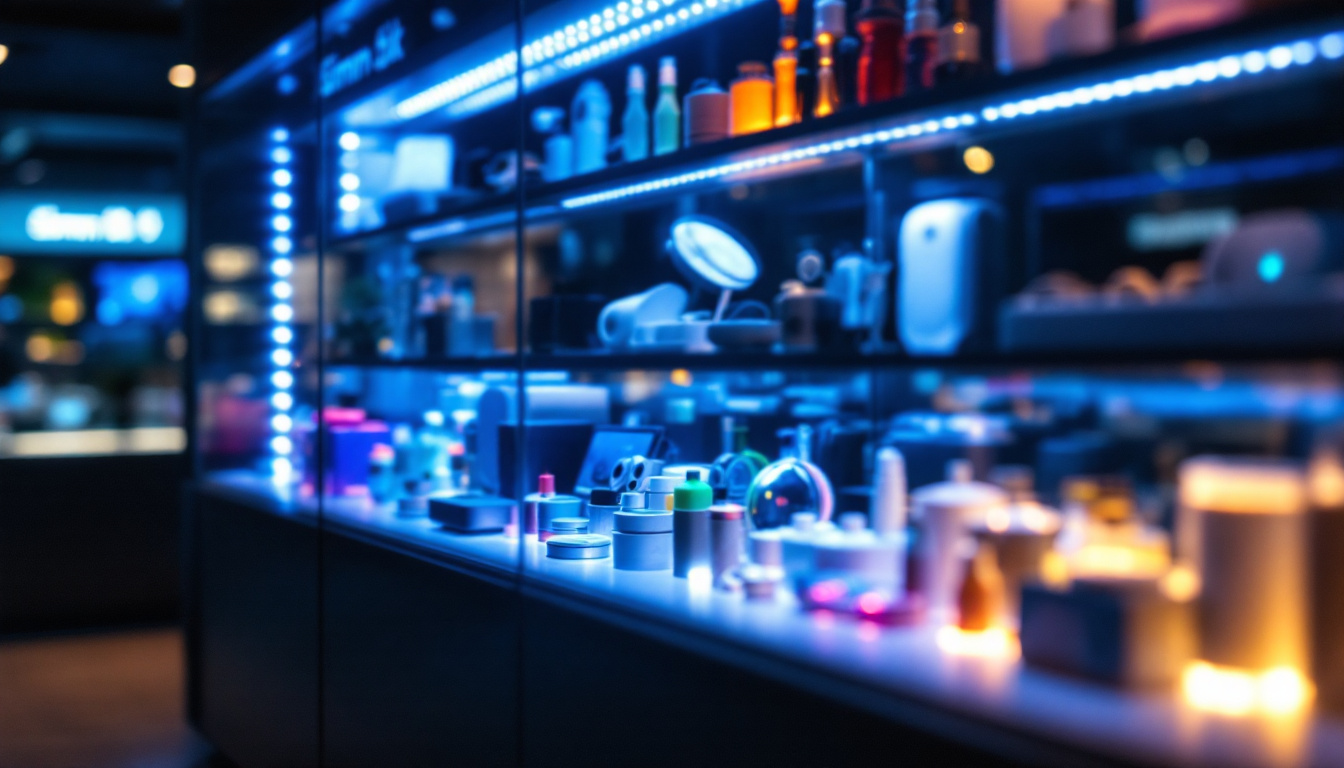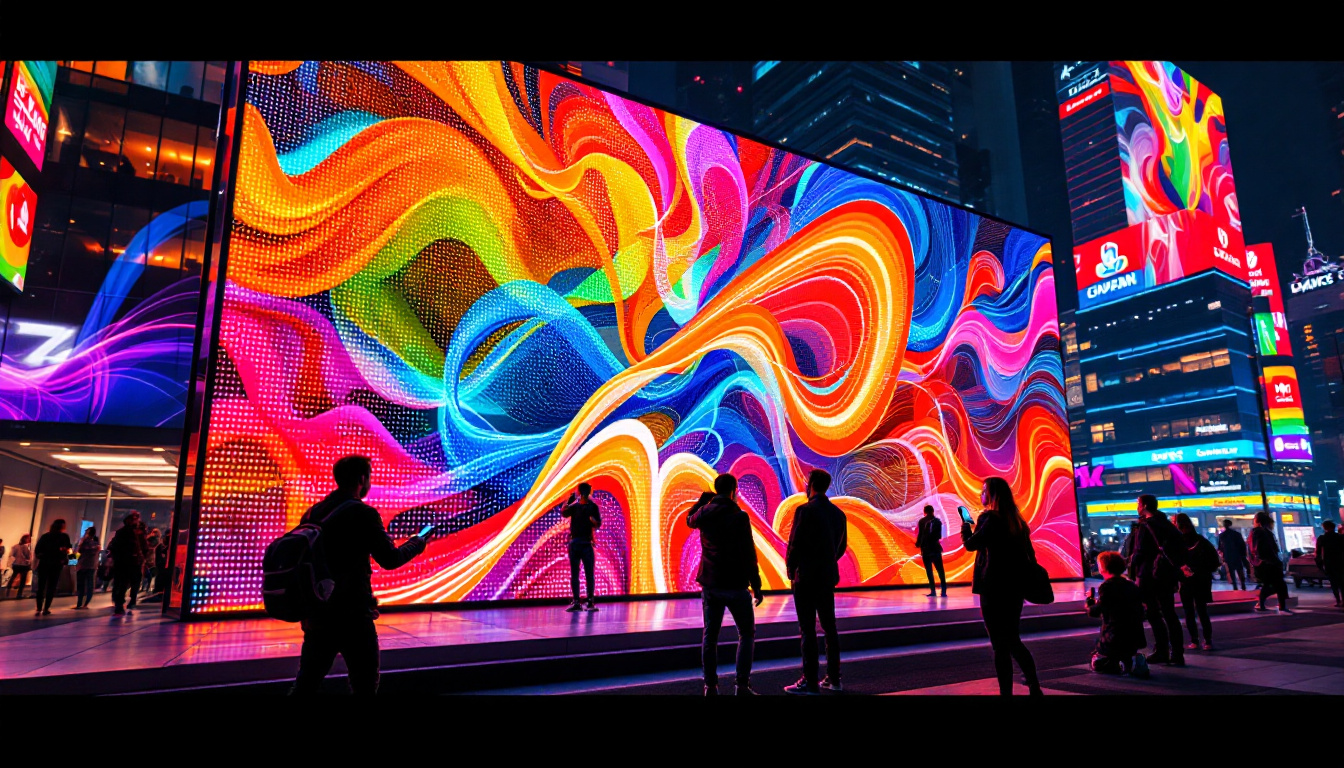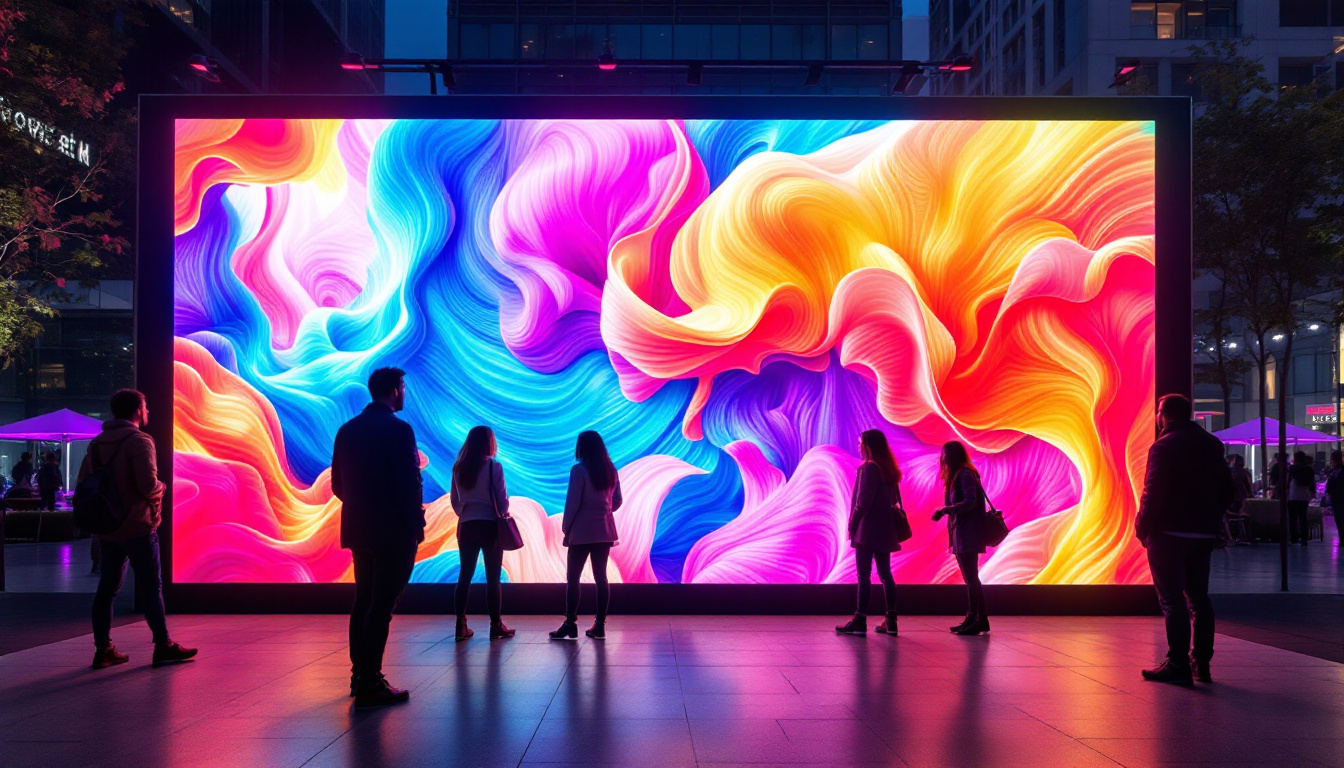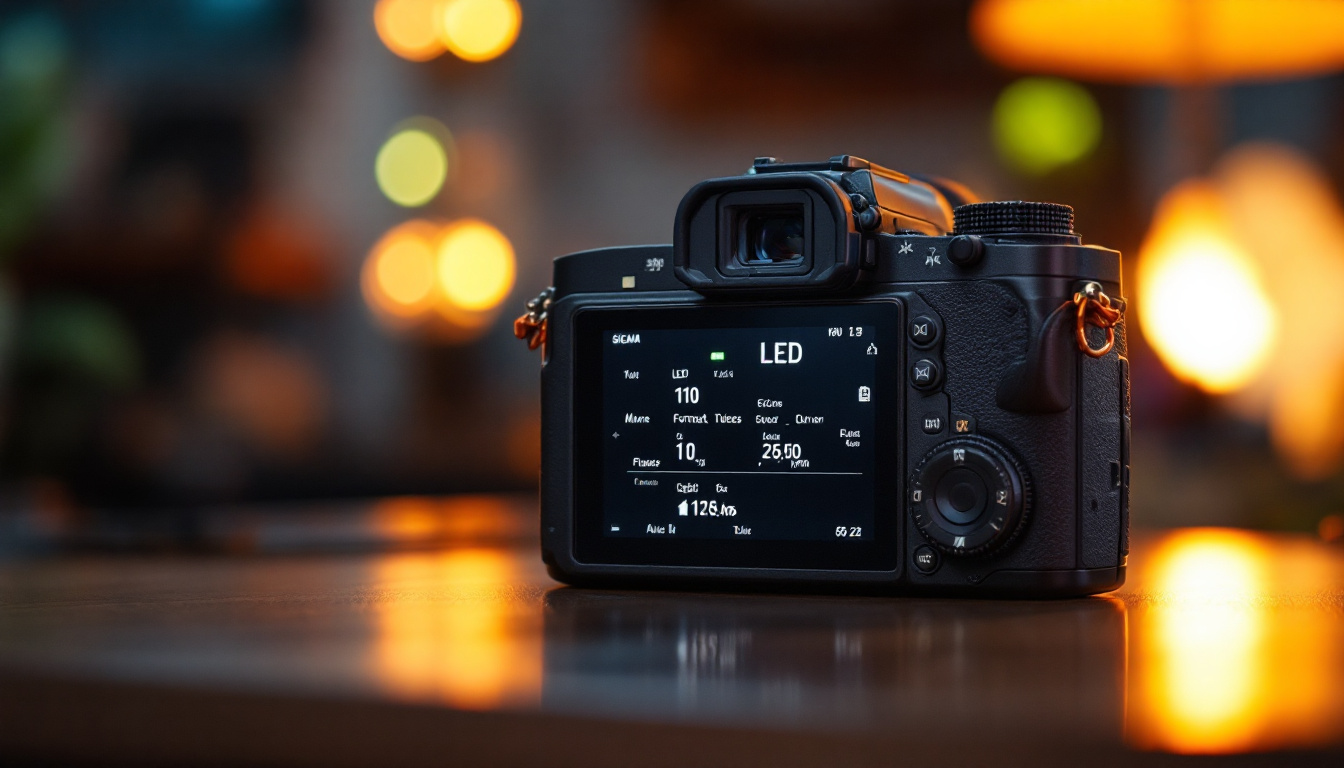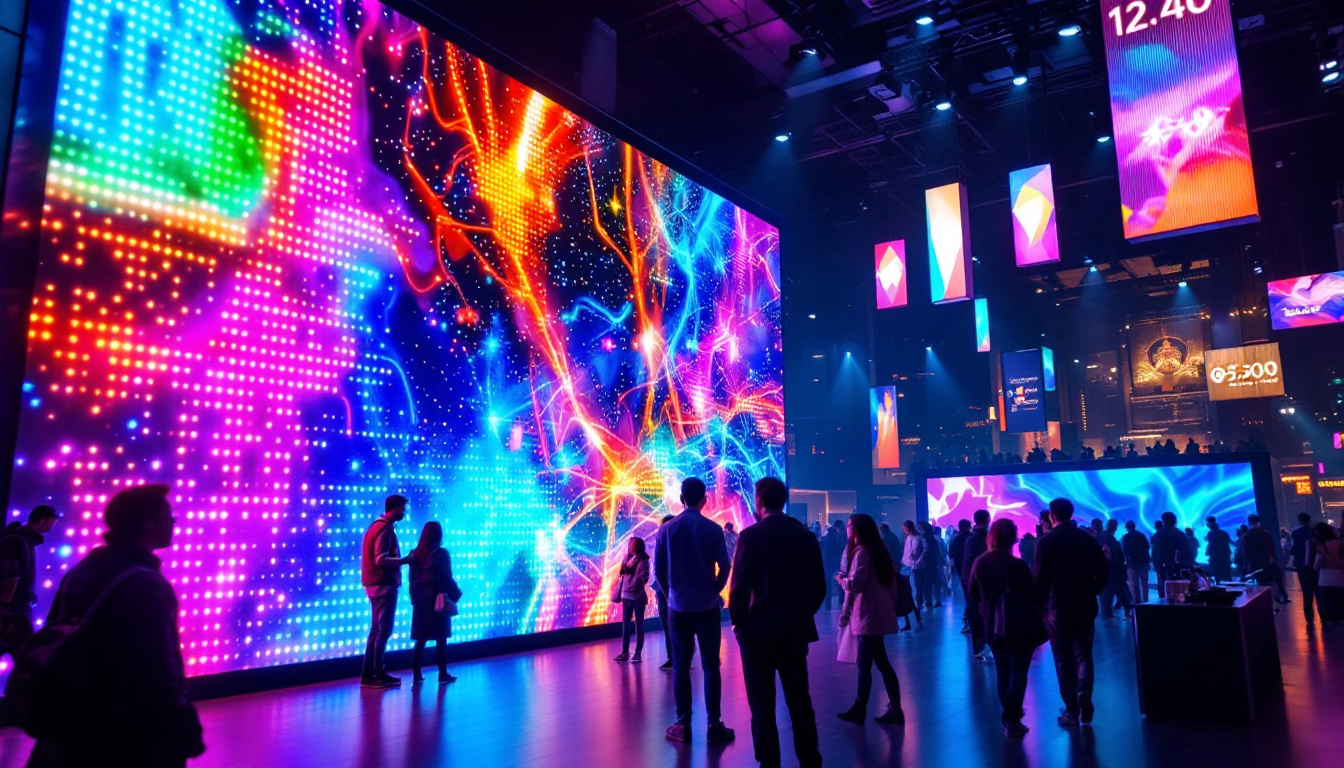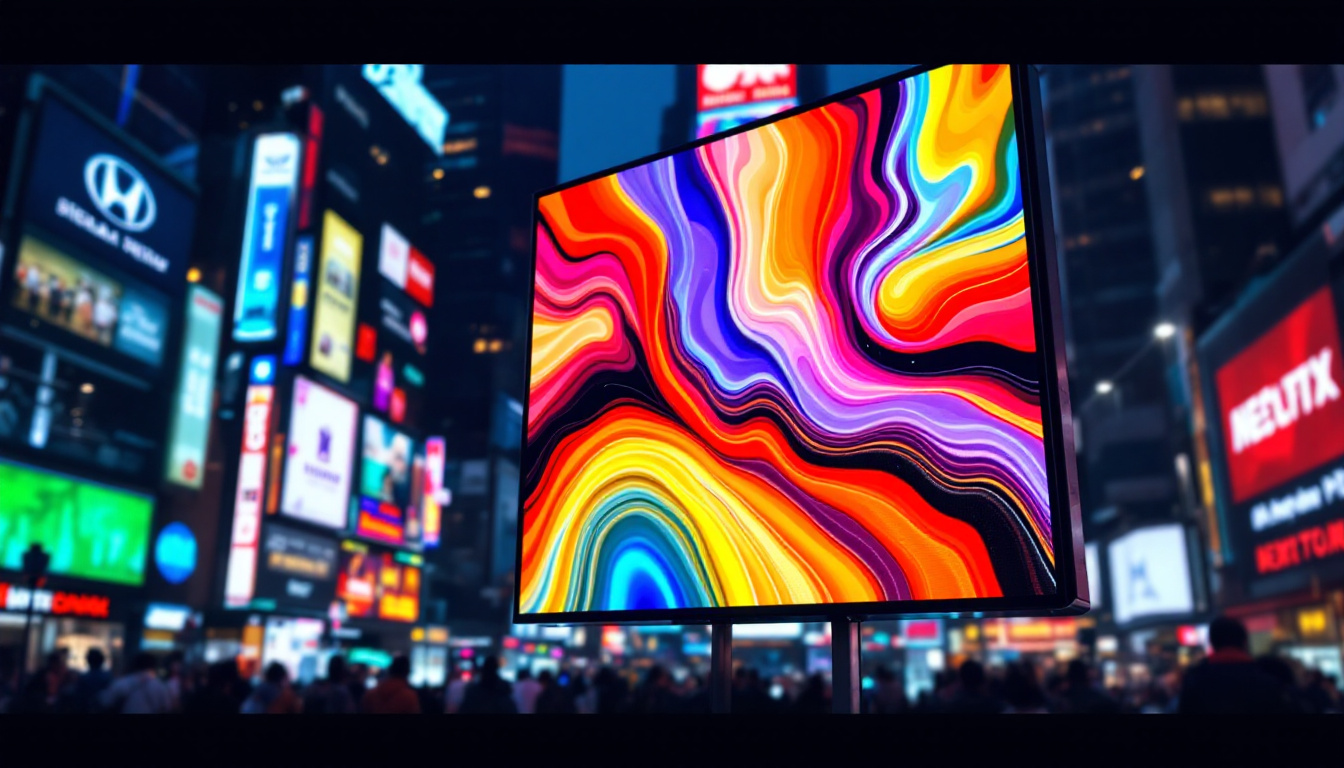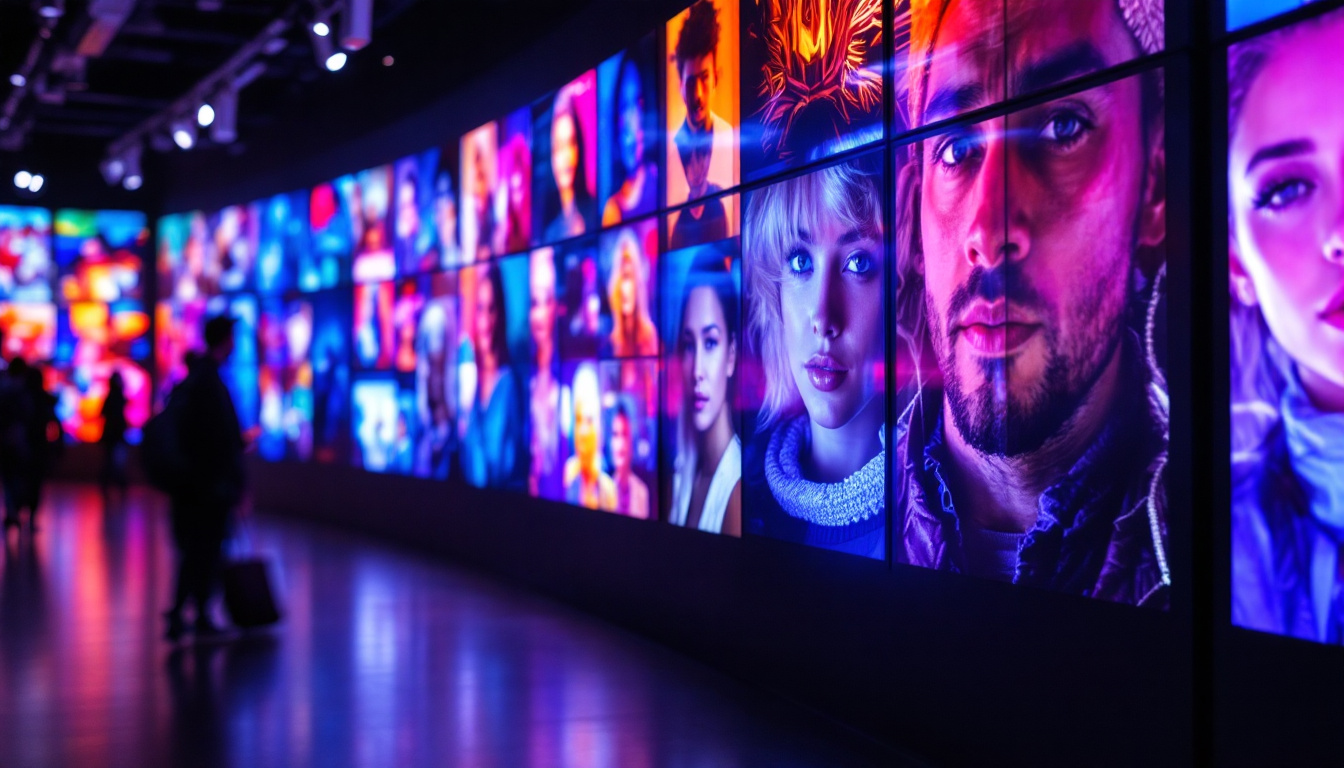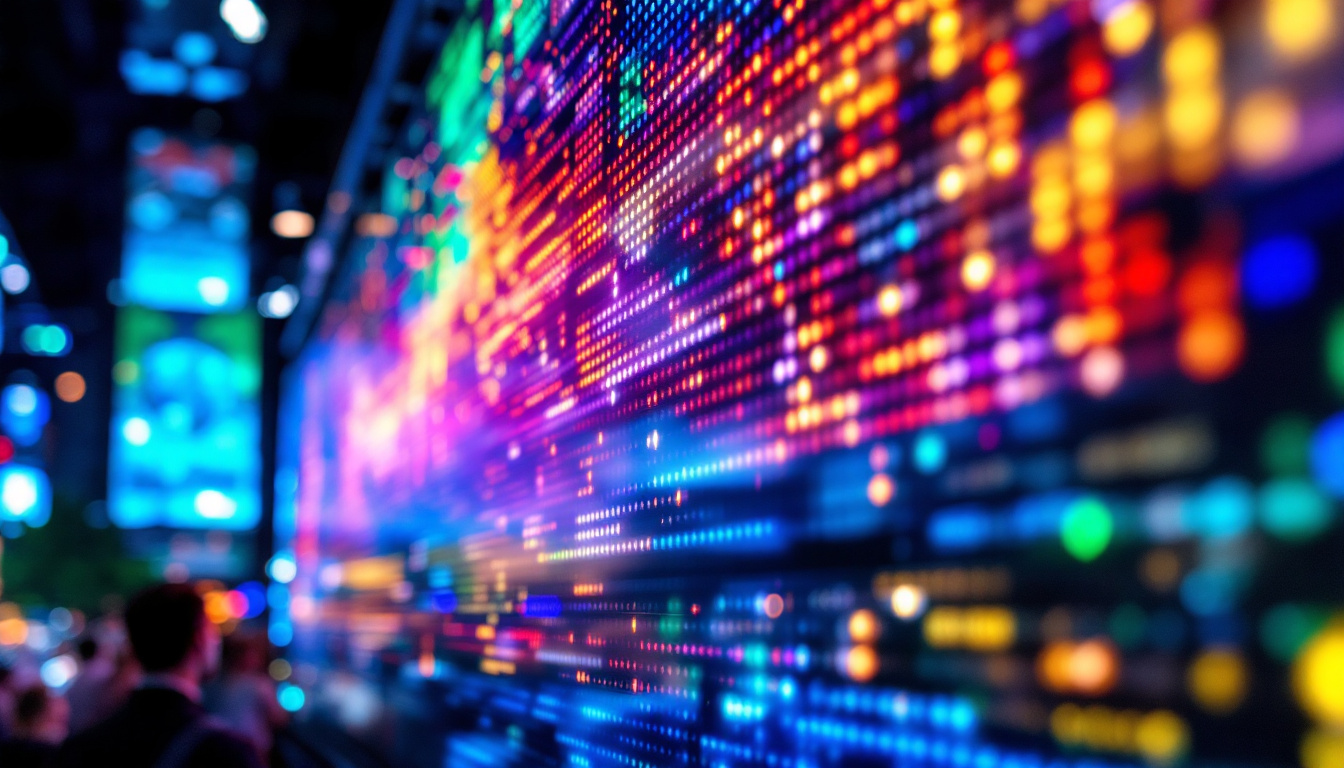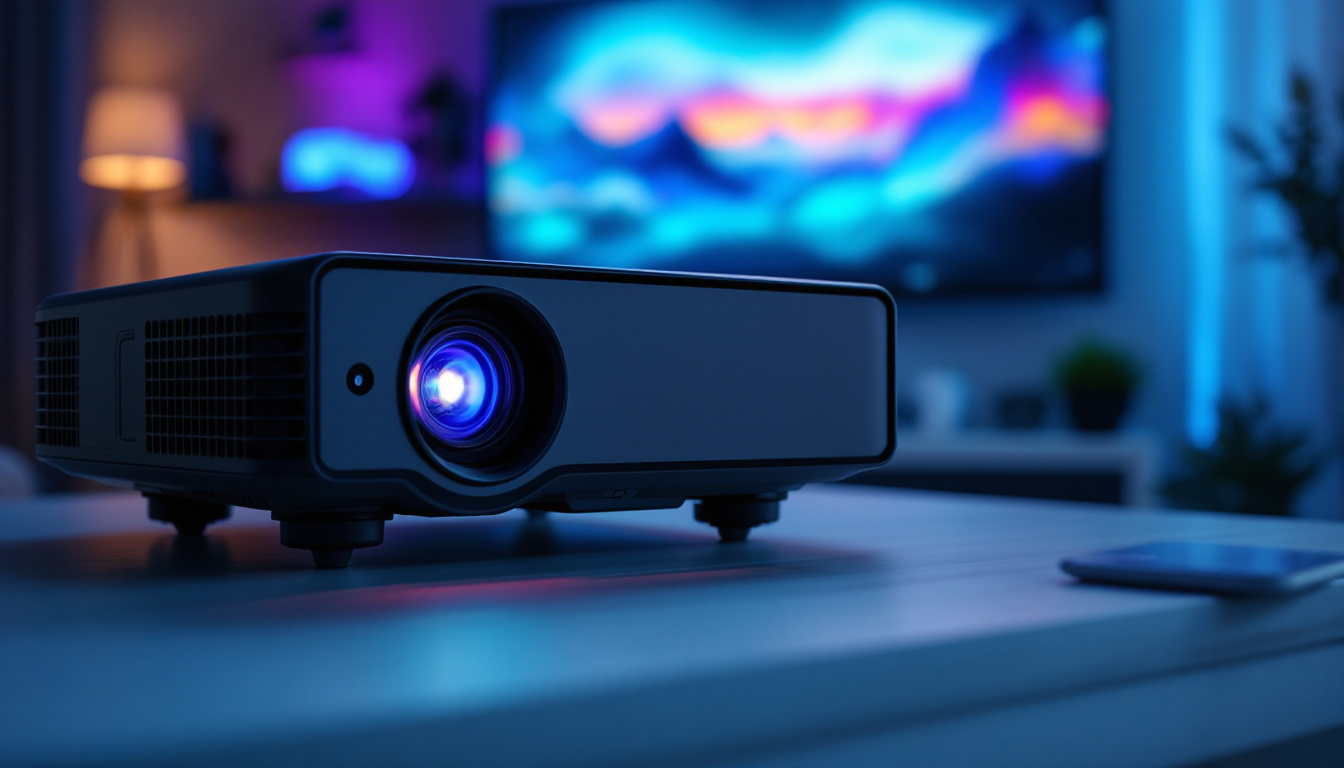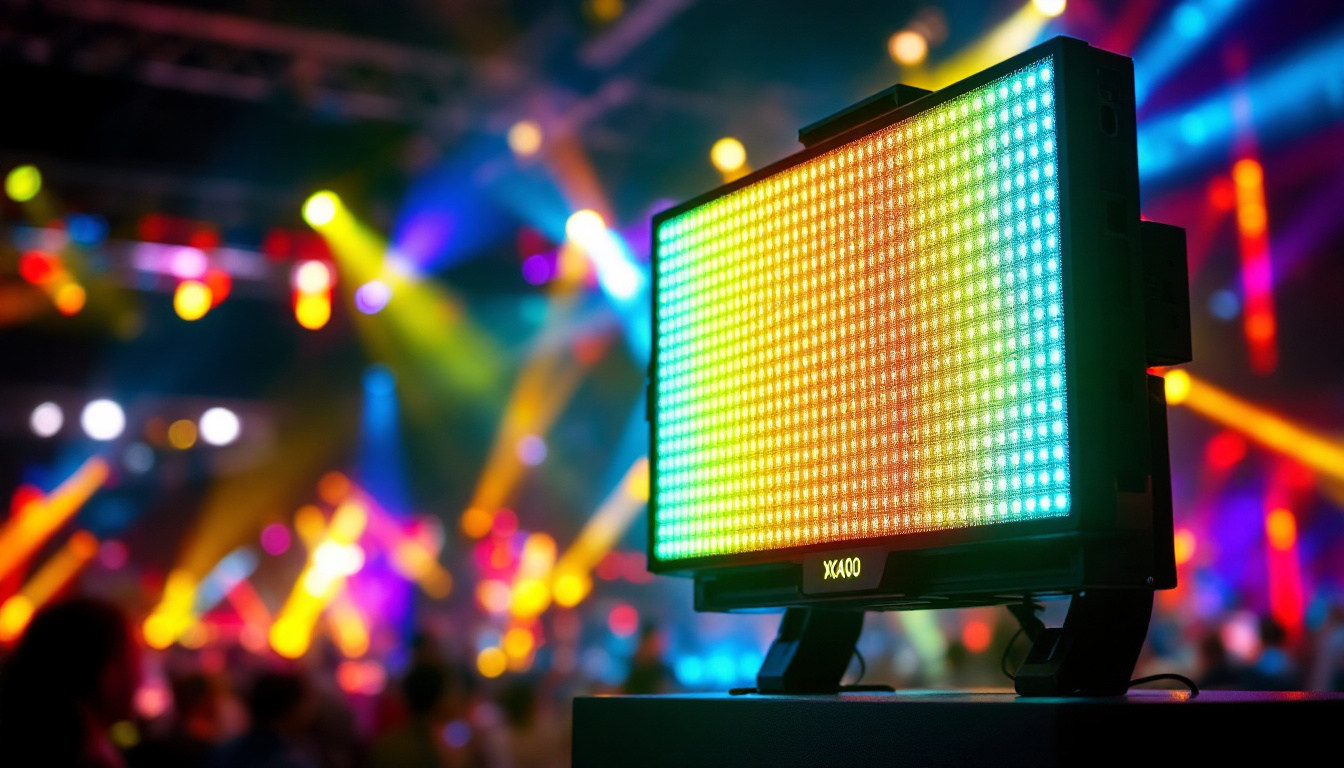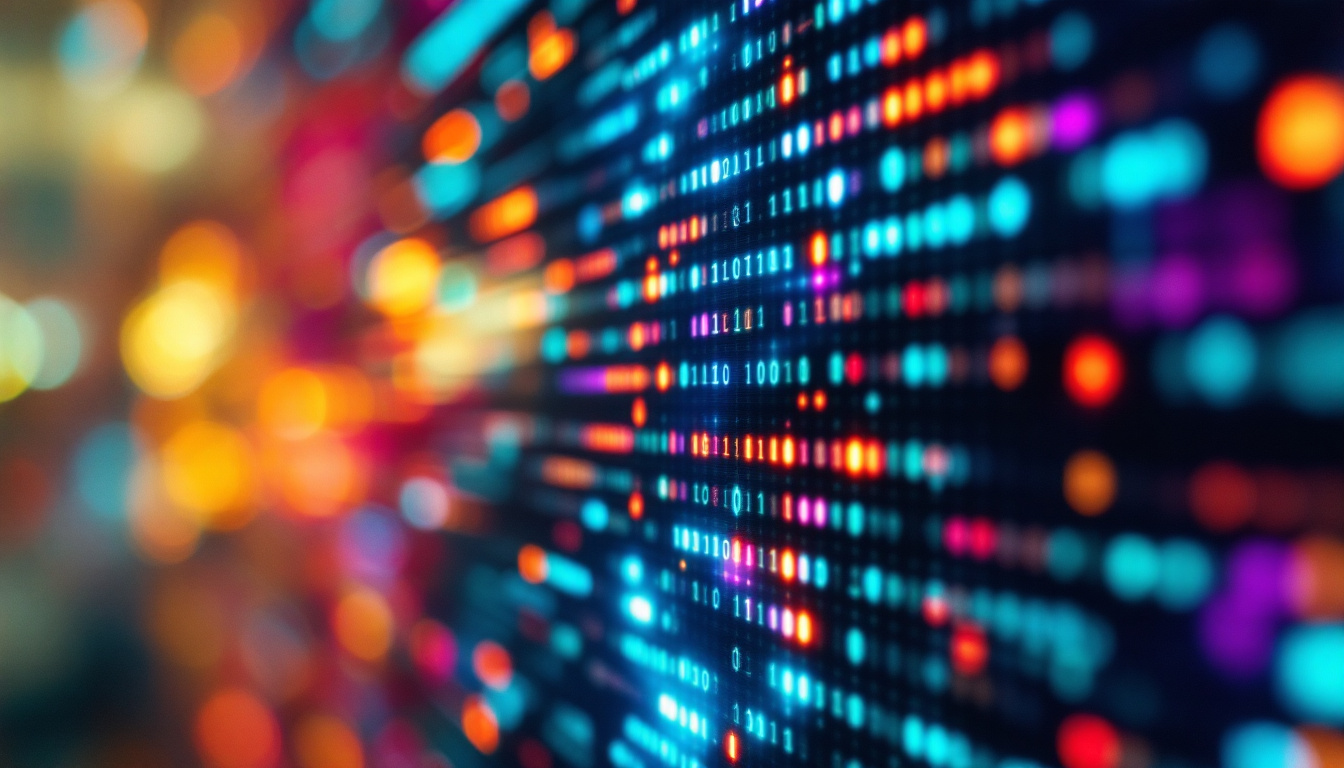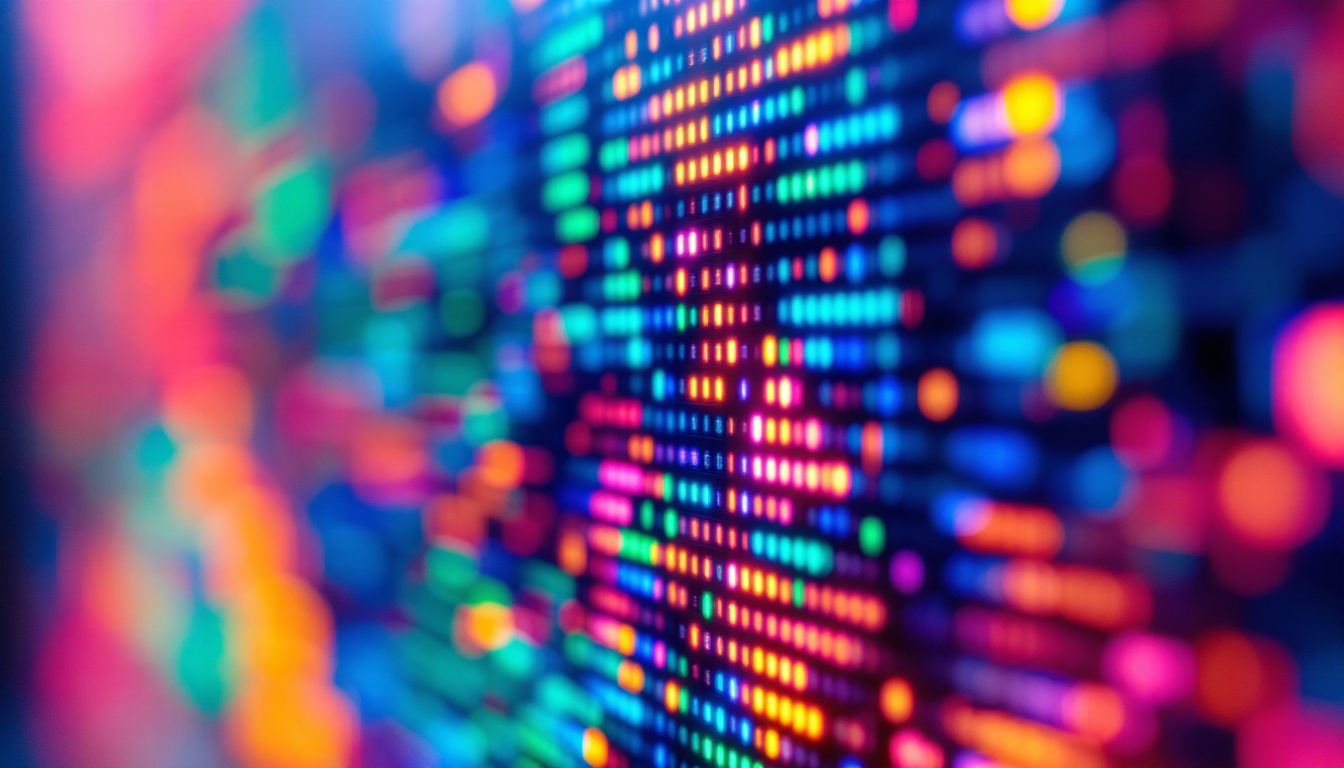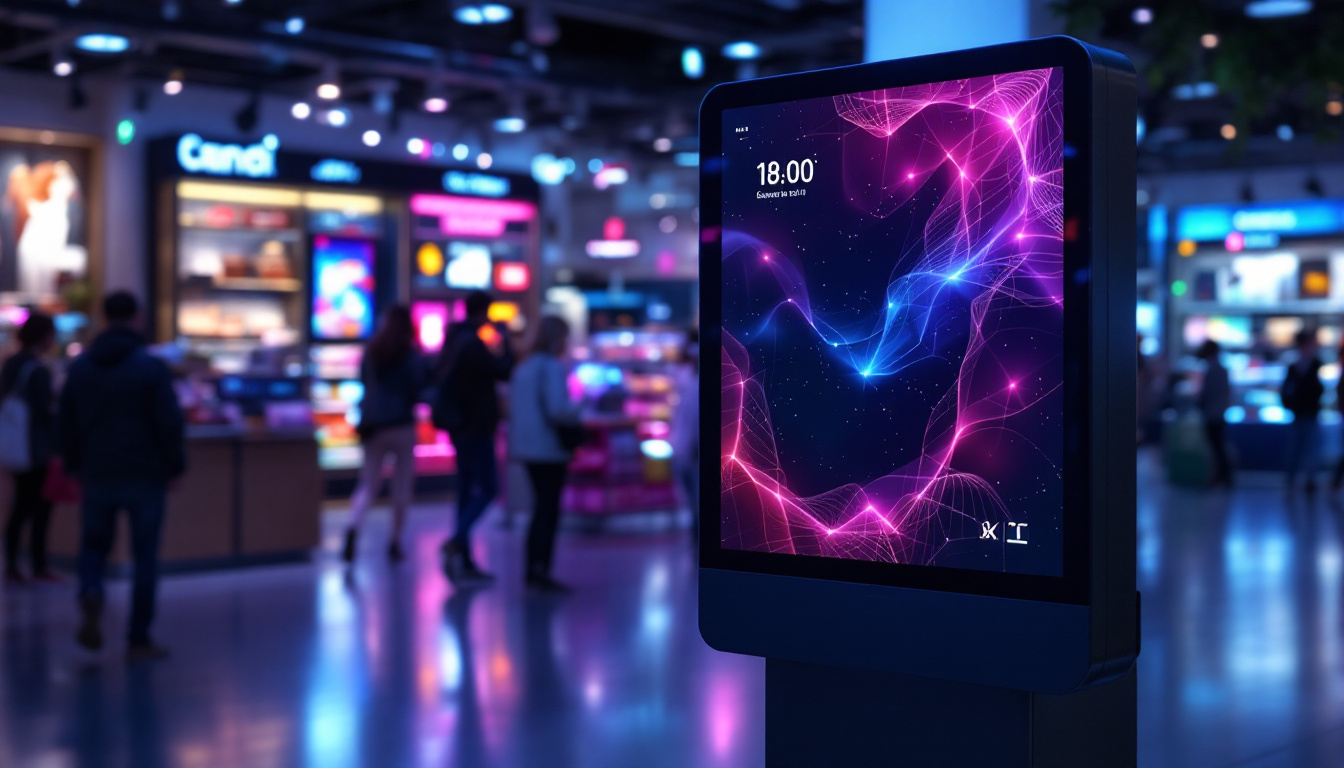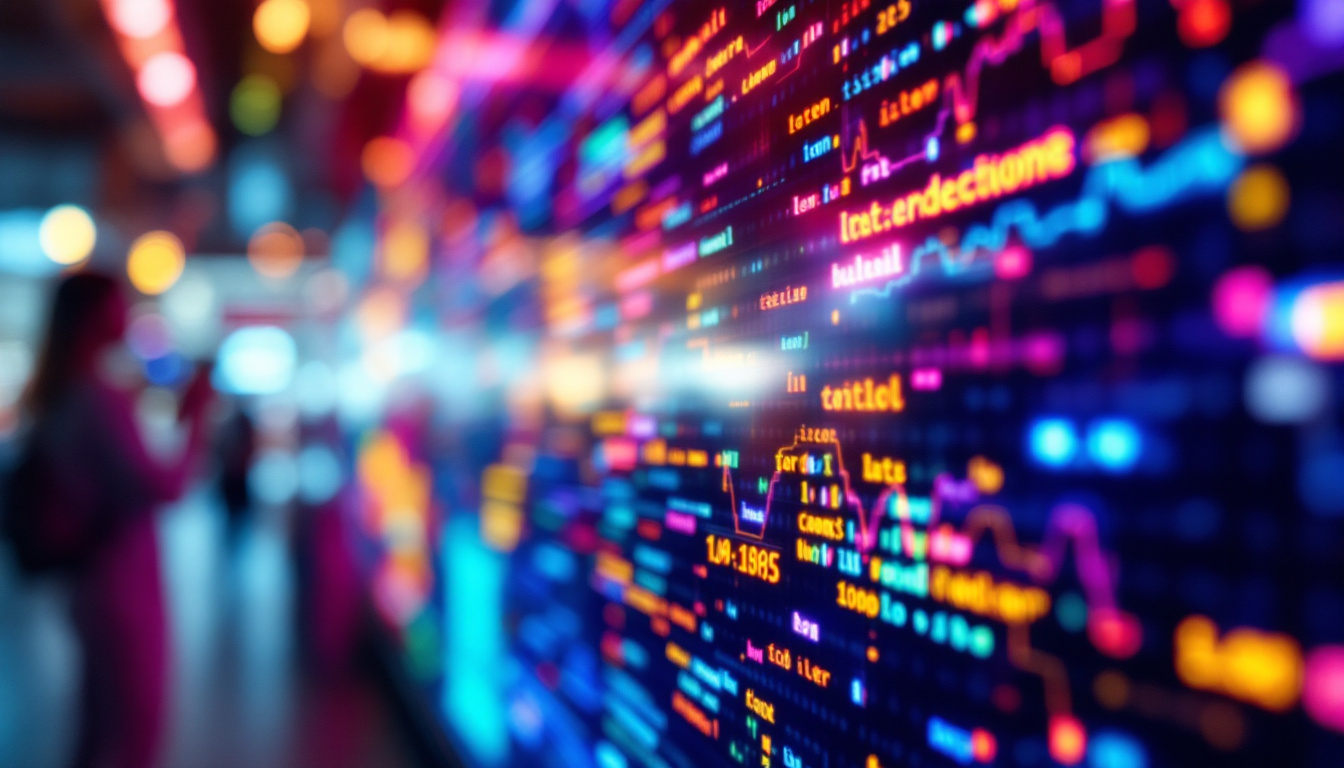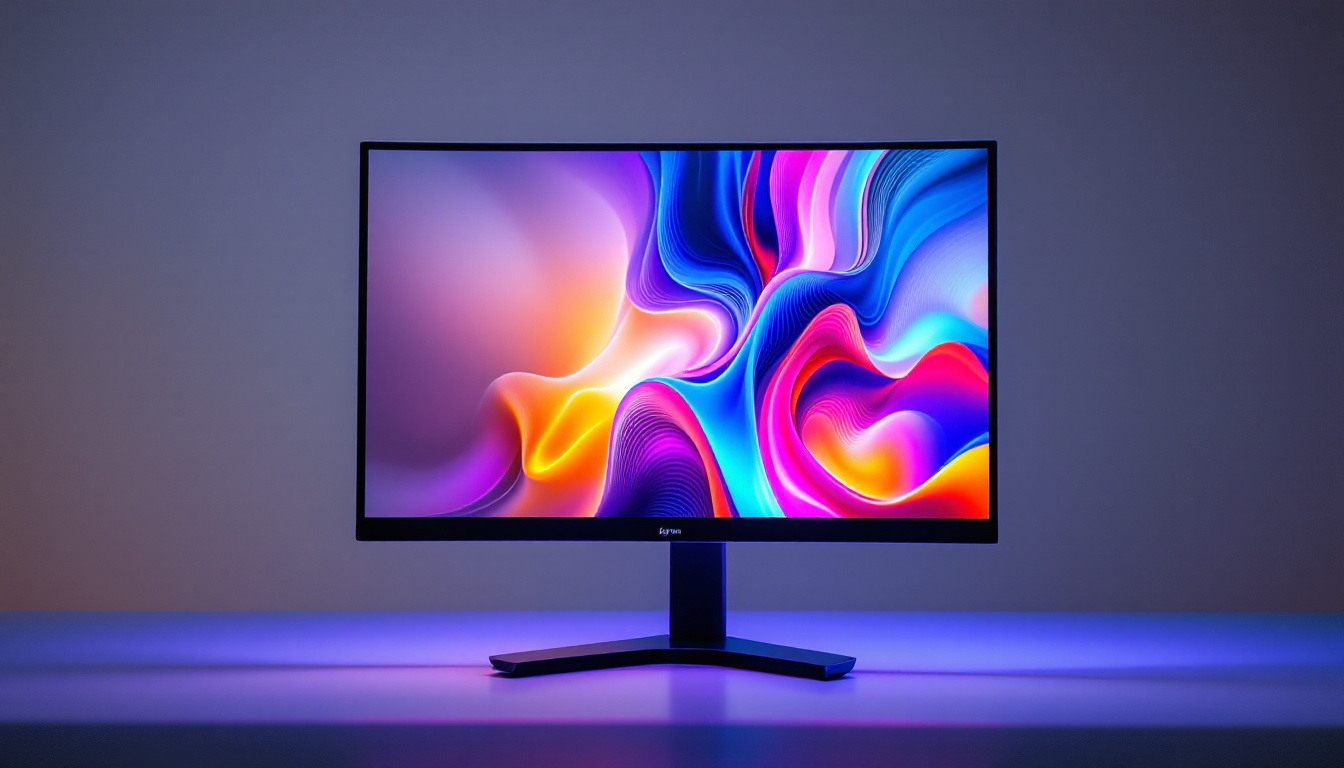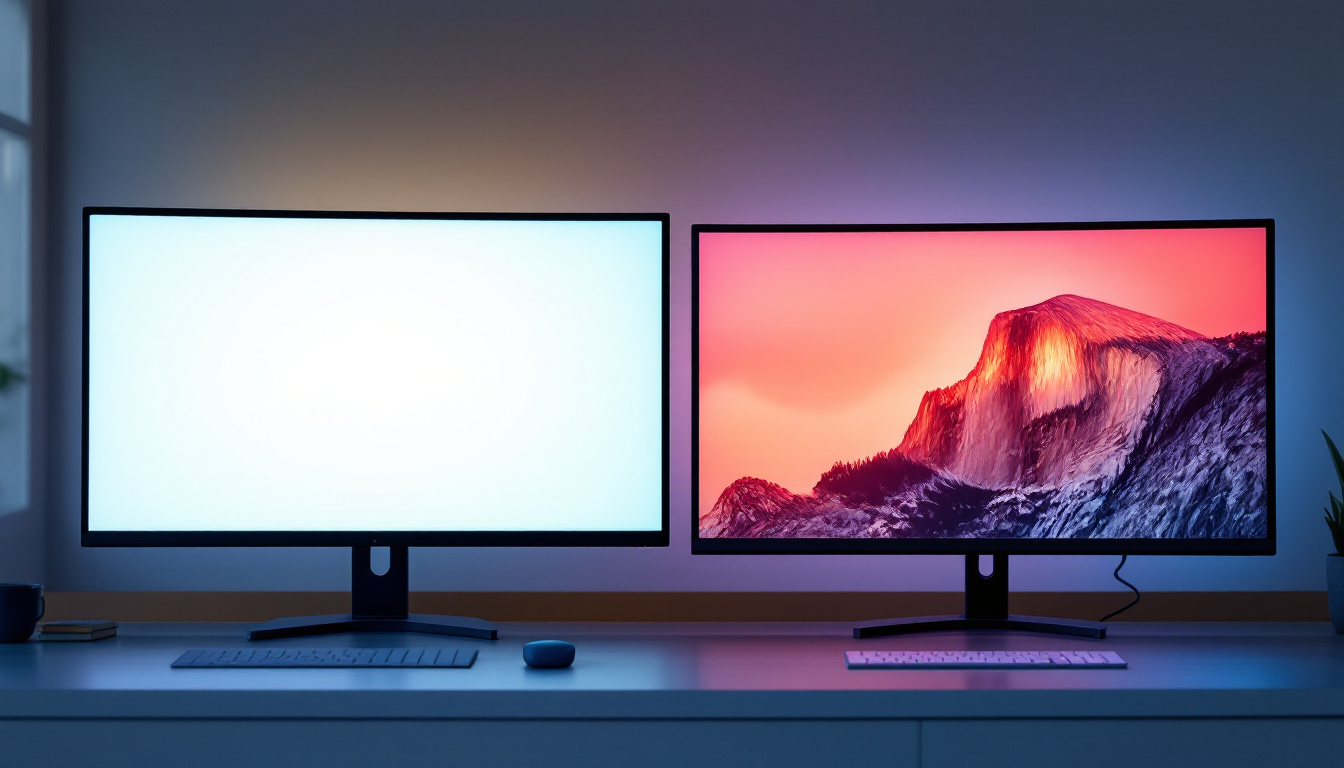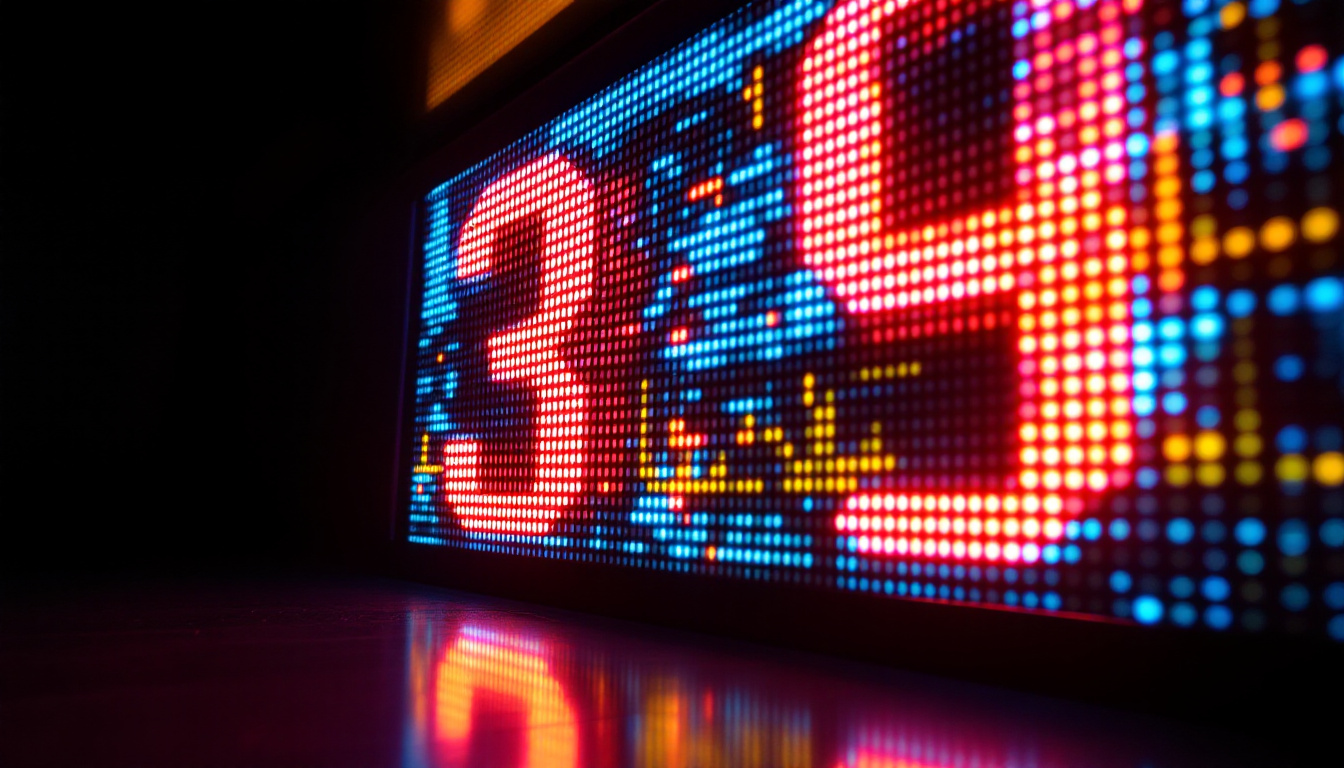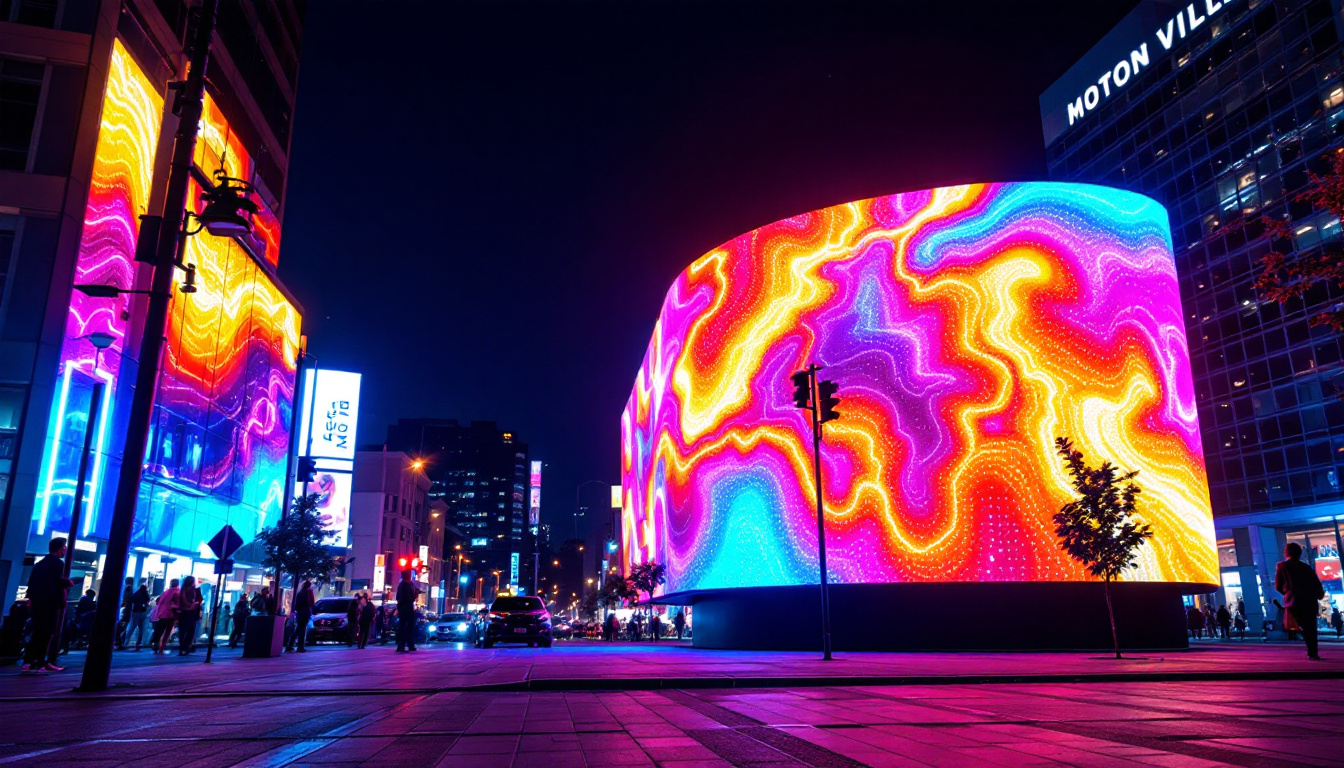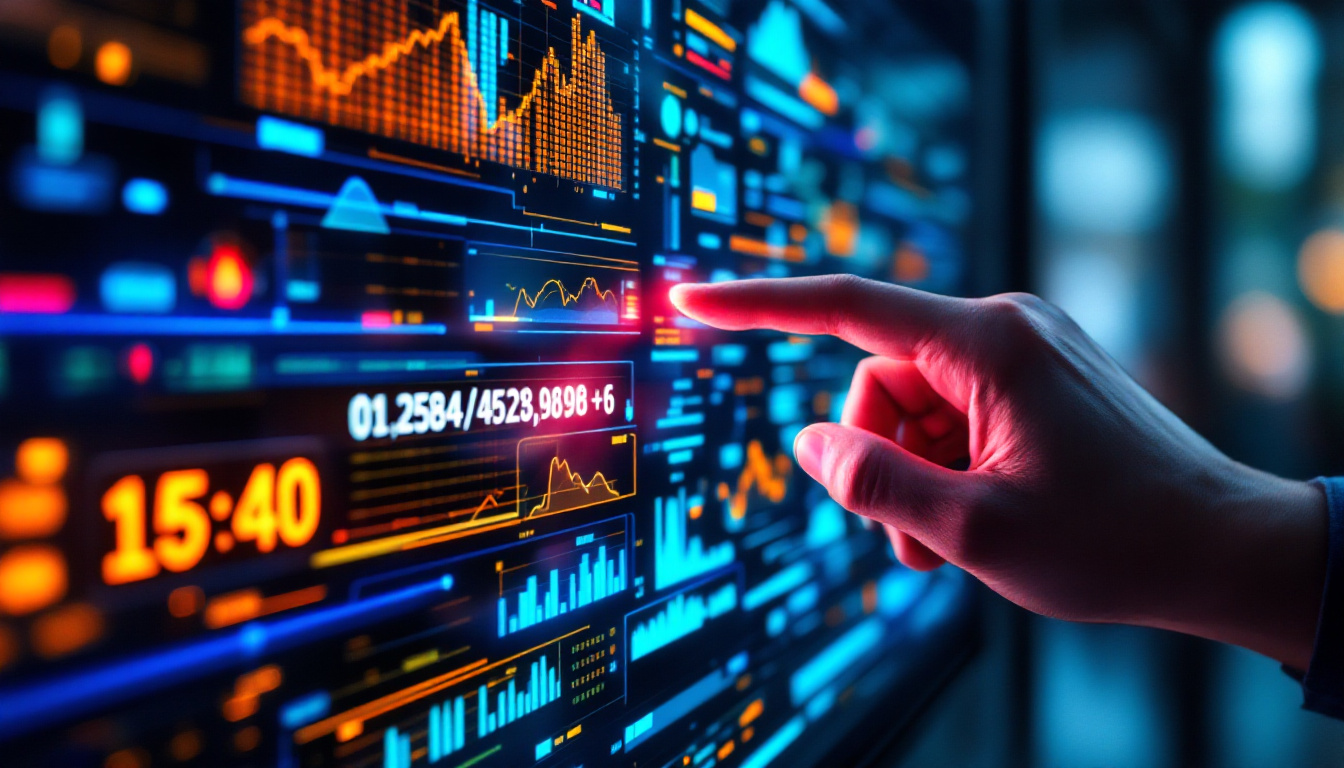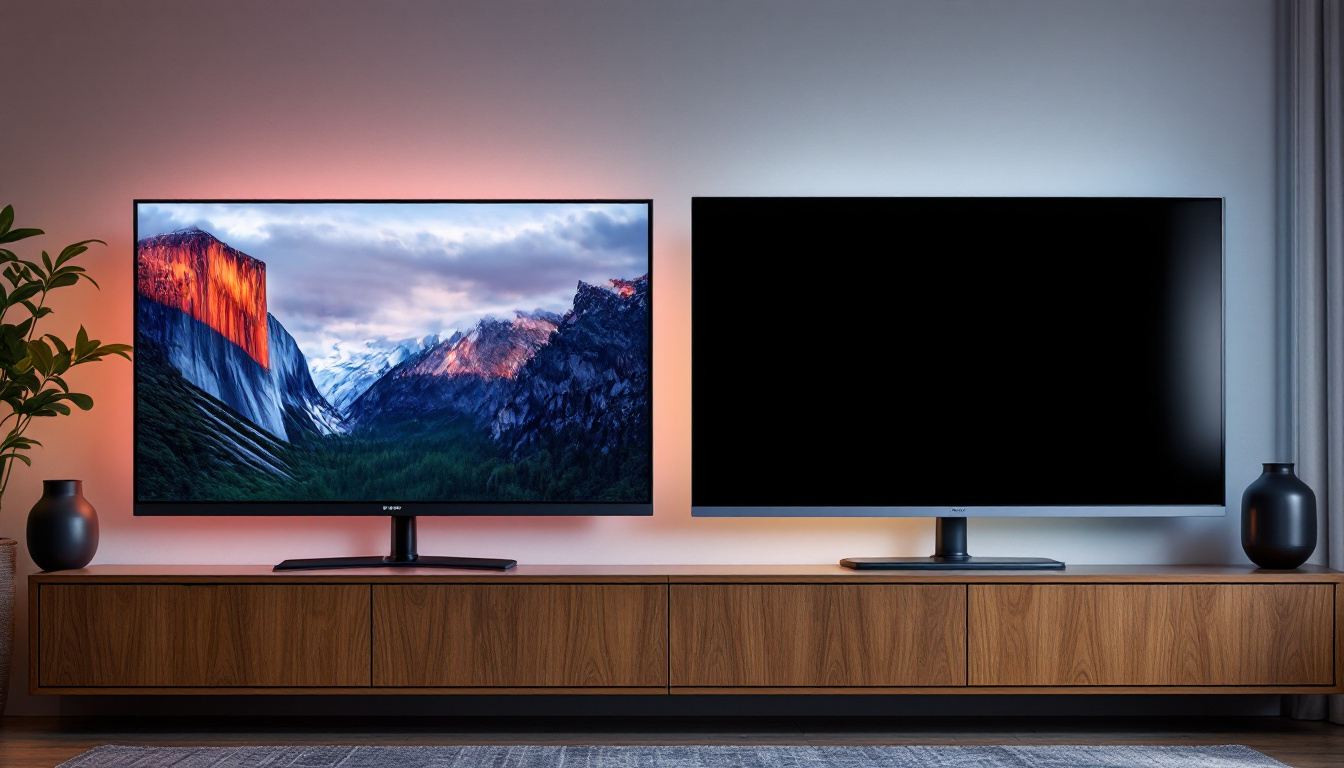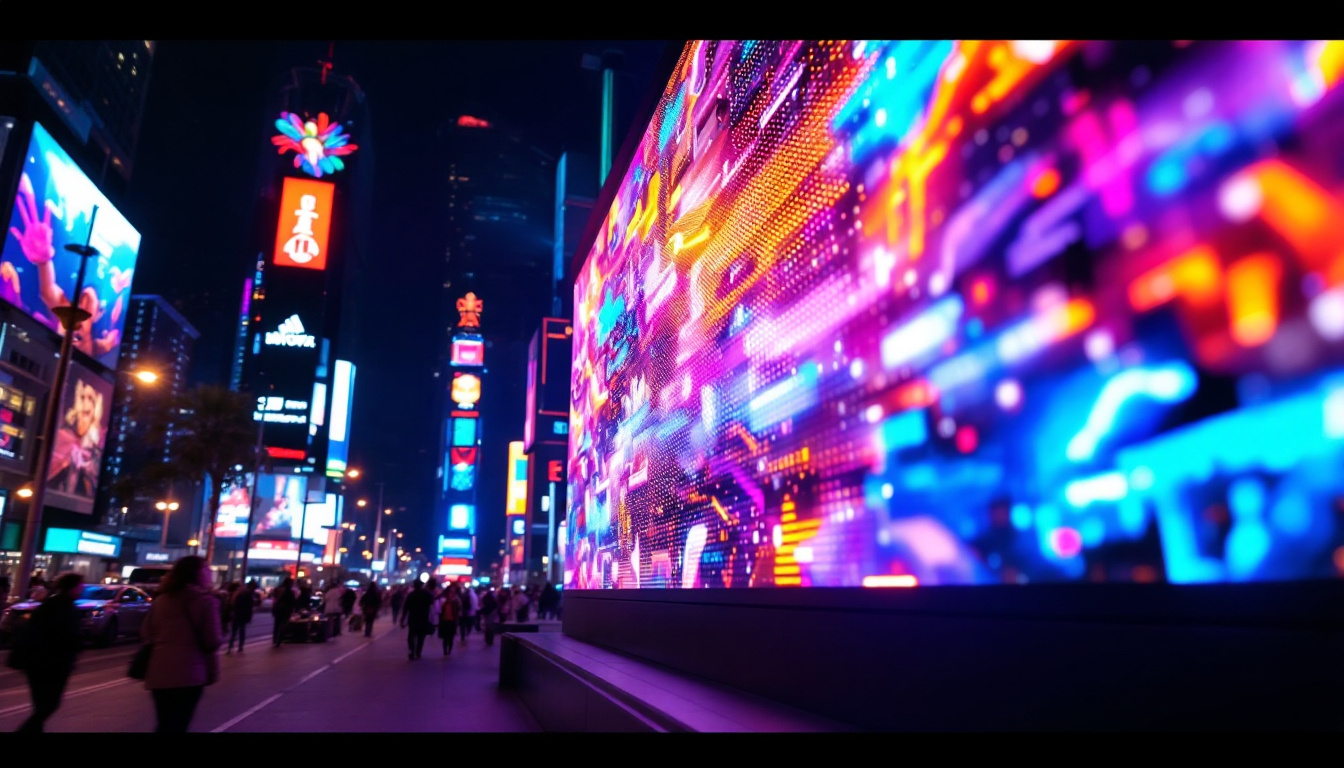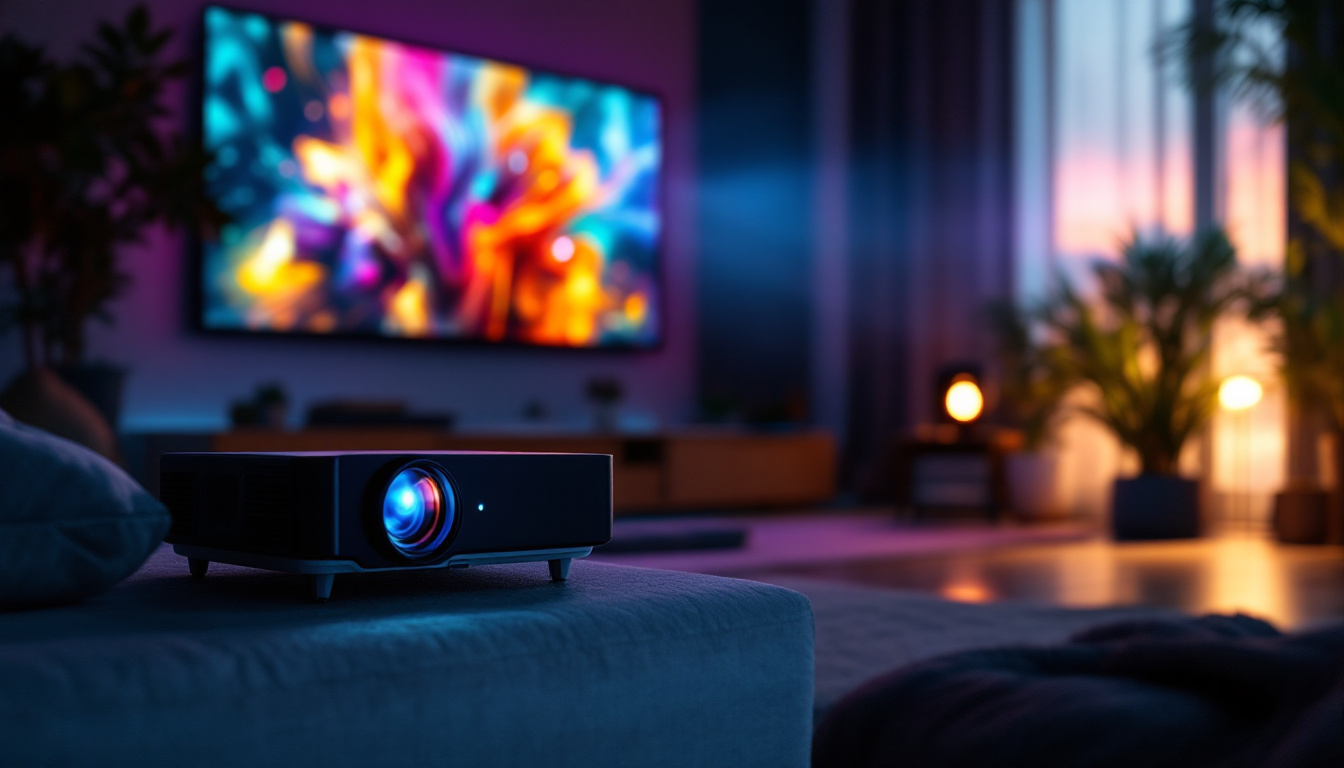In the modern world, LED displays have become ubiquitous, illuminating everything from billboards to smartphones. understanding the meaning of LED and the technology behind these displays can enhance appreciation for their role in daily life. This article delves into the intricacies of LED displays, exploring their functionality, applications, and the future of this transformative technology.
What is LED?
LED stands for Light Emitting Diode. It is a semiconductor device that emits light when an electric current passes through it. Unlike traditional incandescent bulbs, which produce light through heat, LEDs generate light through electroluminescence, a process that involves the movement of electrons within a semiconductor material.
The Science Behind LEDs
At the core of an LED is a chip made from a combination of materials, typically gallium, arsenide, or gallium phosphide. When an electric current is applied, electrons recombine with holes within the material, releasing energy in the form of photons, which is visible light. This process is highly efficient, leading to lower energy consumption compared to conventional lighting methods. Additionally, LEDs have a longer lifespan, often exceeding 25,000 hours, which significantly reduces the frequency of replacements and the associated waste.
Types of LEDs
LEDs come in various forms, each designed for specific applications. Some common types include:
- Standard LEDs: These are used in indicators, displays, and decorative lighting.
- High-Power LEDs: Designed for applications requiring significant brightness, such as streetlights and vehicle headlights.
- RGB LEDs: Capable of producing multiple colors by combining red, green, and blue light, commonly used in displays and stage lighting.
In addition to these, there are also specialized LEDs such as UV LEDs, which emit ultraviolet light and are used in applications ranging from sterilization to curing resins. Another fascinating type is the organic LED (OLED), which utilizes organic compounds to produce light and is commonly found in modern television screens and smartphones. OLEDs offer advantages such as flexibility and the ability to create ultra-thin displays, making them a popular choice in cutting-edge technology.
The versatility of LEDs extends beyond just lighting; they are also integral to various technologies, including communication systems. For instance, fiber optic communication utilizes LEDs to transmit data over long distances at high speeds. This application highlights the dual role of LEDs as both a lighting solution and a critical component in modern digital infrastructure, showcasing their importance in both everyday life and advanced technological applications.
Understanding LED Displays
LED displays are composed of numerous individual LEDs arranged in a grid. These displays can vary in size and resolution, making them suitable for a wide range of applications. From large outdoor billboards to small screens on smartphones, LED technology has revolutionized how visual information is presented. The flexibility in design allows for creative installations, such as curved displays or interactive screens, which further enhances user engagement and experience.
How LED Displays Work
LED displays operate by controlling the intensity of light emitted from each LED. Each pixel in an LED display is made up of multiple tiny LEDs, typically red, green, and blue. By adjusting the brightness of these individual LEDs, a full spectrum of colors can be produced. This ability to mix colors is what enables LED displays to produce vibrant images and videos. Additionally, advancements in technology have led to the development of organic LEDs (OLEDs), which offer even deeper blacks and improved contrast ratios, making them a popular choice for high-end displays.
Moreover, the refresh rate of an LED display plays a crucial role in its performance. A higher refresh rate ensures smoother motion in videos, making it essential for applications like television and gaming. The technology behind LED displays also allows for a wide viewing angle, ensuring that the image remains clear and vibrant from various perspectives. This characteristic is particularly beneficial in environments such as sports arenas and concert venues, where audiences are spread out over a large area. Furthermore, the durability of LED displays makes them ideal for both indoor and outdoor use, as they can withstand harsh weather conditions without compromising performance.
Applications of LED Displays
LED displays are versatile and find applications in numerous fields:
- Advertising: Large outdoor LED billboards are used for advertising due to their brightness and visibility, even in daylight. These displays can be programmed to show multiple advertisements in a rotating schedule, maximizing exposure for various brands.
- Television: LED TVs have become the standard due to their superior picture quality and energy efficiency. With features like smart technology integration, users can access streaming services and apps directly from their televisions, enhancing the viewing experience.
- Digital Signage: Retailers and businesses utilize LED displays for dynamic advertising and information dissemination. These screens can be updated in real-time, allowing businesses to promote sales, events, or important announcements instantly, which is particularly advantageous in fast-paced environments.
Advantages of LED Displays
The rise of LED displays can be attributed to several advantages they offer over traditional display technologies. These benefits range from energy efficiency to durability, making them an attractive option for various applications.
Energy Efficiency
One of the most significant advantages of LED displays is their energy efficiency. LEDs consume considerably less power than traditional lighting technologies, resulting in lower electricity bills and a reduced carbon footprint. This efficiency makes them an ideal choice for both commercial and residential applications. In fact, studies have shown that switching to LED displays can reduce energy consumption by up to 80% compared to incandescent bulbs. This not only benefits the environment but also encourages businesses to invest in sustainable practices, aligning with the growing consumer demand for eco-friendly solutions.
Longevity and Durability
LEDs are known for their long lifespan, often lasting tens of thousands of hours. This longevity translates to reduced maintenance costs and less frequent replacements. Additionally, LEDs are more durable than traditional bulbs, as they are less prone to breakage and can withstand harsher environmental conditions. Unlike fragile incandescent or fluorescent bulbs, LED displays are built with solid-state technology, making them resistant to shocks, vibrations, and temperature fluctuations. This resilience is particularly advantageous in outdoor settings, where displays are exposed to the elements and require reliable performance over time.
High Brightness and Contrast
LED displays offer superior brightness levels compared to other display technologies. This high brightness ensures that images remain clear and vivid, even in bright ambient light. Furthermore, the contrast ratio of LED displays allows for deeper blacks and more vibrant colors, enhancing the overall viewing experience. The ability to produce a wider color gamut means that LED displays can accurately represent a broader range of colors, making them ideal for applications such as digital signage, photography, and video production. This capability is further enhanced by advancements in LED technology, such as the introduction of quantum dot displays, which push the boundaries of color accuracy and brightness, ensuring that every detail is captured with stunning clarity.
Challenges and Considerations
Despite their many advantages, LED displays are not without challenges. Understanding these limitations can help consumers and businesses make informed decisions when choosing display technology.
Cost Considerations
While the cost of LED technology has decreased over the years, initial investment costs can still be higher than traditional display options. This upfront expense may deter some businesses from making the switch, despite the long-term savings associated with energy efficiency and durability. Additionally, the cost of installation and maintenance can add to the overall expenditure, especially for large-scale installations in commercial settings. Businesses must weigh these factors against the potential return on investment, which can be substantial given the lower energy bills and reduced need for frequent replacements.
Heat Management
LEDs generate heat during operation, which can impact their performance and longevity if not managed properly. Effective heat dissipation mechanisms, such as heat sinks, are essential to ensure that LEDs operate within safe temperature ranges. Failure to manage heat can lead to reduced brightness and a shorter lifespan. Moreover, in environments where LED displays are subjected to high ambient temperatures, additional cooling solutions may be required to maintain optimal performance. This necessity can complicate installation and increase operational costs, making it crucial for users to consider the specific conditions in which their displays will be used.
Color Accuracy and Calibration
Another challenge associated with LED displays is achieving and maintaining color accuracy. While LEDs can produce vibrant colors, variations in manufacturing and environmental factors can affect color consistency over time. Regular calibration is often required to ensure that colors remain true to the intended design, which can be a time-consuming process for businesses that rely on precise color representation, such as in graphic design or advertising. Additionally, the perception of color can vary based on the viewing angle, which may necessitate careful placement and orientation of the displays to ensure uniformity for all viewers.
The Future of LED Technology
As technology continues to evolve, the future of LED displays looks promising. Innovations in materials, design, and applications are paving the way for even more advanced LED solutions.
MicroLED and MiniLED Technologies
MicroLED and MiniLED technologies represent the next generation of LED displays. MicroLEDs consist of tiny individual LEDs that can be used to create ultra-high-resolution displays with exceptional color accuracy and brightness. MiniLEDs, on the other hand, utilize smaller LED backlights for improved contrast and local dimming in LCD displays.
These advancements are expected to enhance the viewing experience significantly, making displays thinner, lighter, and more energy-efficient.
Integration with Smart Technology
The integration of LED displays with smart technology is another trend shaping the future. Smart LED displays can connect to the internet, allowing for real-time updates, remote management, and interactive features. This connectivity opens up new possibilities for advertising, information sharing, and user engagement.
Conclusion
LED displays have transformed the way information is presented and consumed. Their energy efficiency, longevity, and vibrant colors make them a preferred choice across various industries. While challenges remain, ongoing advancements in LED technology promise to address these issues and further enhance the capabilities of LED displays.
As the world continues to embrace digitalization, understanding the meaning and functionality of LED displays becomes increasingly important. With their growing presence in everyday life, LEDs are not just a technological innovation; they represent a shift towards a more efficient and visually engaging future.
Explore the Future of Visual Engagement with LumenMatrix
Ready to elevate your visual communication to the next level? Discover LumenMatrix’s innovative LED display solutions, where cutting-edge technology meets creative design. From dynamic Indoor and Outdoor LED Wall Displays to specialized solutions like Vehicle LED Displays and LED Sports Displays, LumenMatrix offers a wide array of options to captivate your audience. Whether you’re looking to create immersive environments with Floor LED Displays or make a bold statement with Custom LED Displays, our mission is to empower your brand with displays that deliver impact and clarity. Don’t miss the opportunity to transform your space. Check out LumenMatrix LED Display Solutions today and join the revolution in visual storytelling.


